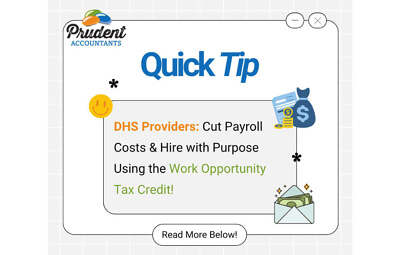Advertising – Industry Guide – Minnesota Department of Revenue
Nontaxable Advertising Services
Minnesota Rule 8130.9250, Advertising, is the basis for this fact sheet. The guidelines in the rule apply only when providing advertising services or creative promotional materials. The most common types of businesses that provide these services are:
- Advertising agencies
- Graphic design studios
- Desktop publishers
- Printers
- Recording and video studios
- Photographers
This rule does not apply when these businesses are producing other products or forms of communication such as surveys, studies, polls, training materials, or other items that are not advertising.
Nontaxable advertising is creative promotional services that meet three criteria:
1. There is no functional use of the medium except to carry the message.
2. The agency must be involved in the creation of advertising.
3. The agency must have a direct relationship with the advertiser.
Creating Advertising
You must create the advertising to be considered a provider of nontaxable advertising services. Any of the following activities alone or in combination may contribute to the creation of advertising:
- Development of data, concepts, or ideas
- Analysis of available media and means to advertise
- Analysis of present and potential markets
- Study of the products/services to be promoted
- Determination of a distribution and sales strategy based on analysis of customer operations
- Placement of advertising in the media
- Formulation of an advertising plan
- Separately stated charges to customers for agency fees, creativity assessments
The words “advertising services” or “creative promotional services” must be clearly noted on the invoice. The agency must clearly indicate that it directed the creative work for the nontaxable advertising services.
For example, when the three nontaxable advertising criteria are met, then the following items used to promote or advertise are usually considered to be “nontaxable advertising services”:
- Advertising banners
- Advertising posters
- Audio or visual commercials
- Billboard ads
- Brochures
- Catalogs
- Direct mail advertising materials
- Direct marketing materials
- Display signs
- Flyers and handouts
- Magazine ads
- Newspaper ads
- Newspaper inserts
- Point-of-sale materials
- Print media advertising
- Radio commercials
- Sales promotion materials
- Table tents
- Television commercials
- Trade journal ads
- Yellow page ads
Example
An advertiser contracts with an agency to produce 5,000 brochures. The agency designs the brochure and hires the printer to do the printing. The printer charges the agency $1,000 for printing and $68.75 tax. The customer invoice reads as follows:
For creative and promotional services
| Creative design, artwork and in-house set up
In-house keyline Printing of brochure Agency fee Total |
$2,392.00 152.00 1,068.75 1,000.00 $4,612.75 |
Display Equipment
Nontaxable advertising does not include display equipment. Display booths, point-of-sale displays, racks, and all other equipment used to display advertising materials are taxable.
Key Concepts
In order to understand the remainder of this fact sheet, it is important to understand these key concepts.
Advertising is creative promotion. It makes you want to buy something, think positively about an idea or organization, hear about a public concern, or vote for a candidate. It promotes the sale of a product or a public image. It may be a public service announcement or a political message.
Advertising provider is an agency responsible to the advertiser for the development of promotional materials. For sales tax purposes, there are two different types of advertising: nontaxable advertising services and taxable advertising. Each has different tax consequences. An agency may be hired to provide nontaxable advertising services, taxable advertising products, or both. The provider does not have to call themselves an advertising agency. In this fact sheet, agency means any provider of creative promotional services.
Advertiser is a firm or person who purchases advertising.
Direct relationship is a criteria for determining a nontaxable advertising service. The provider must be directly responsible to the advertiser. A subcontractor never has a direct relationship.
Inputs are, for the most part, materials directly incorporated into the production piece of advertising. The paper a brochure is printed on is an input, as is the ink used to print it. There are a few inputs, photographs being the most common that do not become part of an actual product. Any tangible component of advertising that is purchased on a subcontract is treated as an input.
Preliminary art is prepared to provide an advertiser with a variety of promotional options. It demonstrates concepts or ideas that can be pursued in developing the final promotional product. It can be presented as roughs, mock-ups, visualizations, comprehensives, layouts, sketches, drawings, paintings, designs, storyboards, rough cuts of film and tape, initial audio and visual tracks, and work prints. Once the advertiser selects a promotional concept, either verbally or in writing, the work of the agency is no longer preliminary art.
Office supplies are those materials you need to operate your business. Color pencils, paints, art supplies, all paper directly used in printing a product, clip art, software, and invoices are examples of office supplies.
Functional use is a term used to distinguish nontaxable advertising services from taxable advertising. It refers to the medium on which the advertising is produced. If the medium has a use beyond the promotional message, it has functional use. Advertising that has functional use is taxable.
Example: A brochure is used only for advertising. If the advertising message is taken away, nothing is left but a piece of paper. However, a calendar with an advertising message on it is used for both advertising and also date information. If the advertising message is removed, the calendar still provides information about day and month. This calendar has functional use so it is taxable.
Creating Your Own Advertising
When you create advertising for your own use, you must pay tax on all inputs purchased to make the advertising such as artwork, photos, printing, and certain digital products. No tax is due on the time your own employees spend creating the advertising.
An exemption may apply to purchases of certain items used to create your own advertising if the items will be shipped out of Minnesota (see the next section)
Example
- A business has a marketing division that creates its own advertising materials. Their purchase of artwork, photos, software, paper, and the necessary equipment to create their advertising is all taxable. Any subcontracted work such as printing is also taxable.
Nontaxable Advertising for Use Outside Minnesota
Generally, an agency must pay sales tax on all of the materials used to create nontaxable advertising. However, when nontaxable advertising is produced for use outside of Minnesota, the agency may purchase most inputs for the advertising leaving the state exempt from sales tax. To validate the exemption, the advertiser must give the agency documentation specifically stating the portion of the advertising that will be used outside of Minnesota.
Example
An advertiser purchases brochures from an agency. One-half of the brochures will be used in Minnesota, and one-half will be shipped outside Minnesota for use. The agency should ask the advertiser what portion of the brochures will be used outside Minnesota (50%), and document the percentage in its records.
The agency may purchase 50% of all materials consumed in the production of the brochures exempt from the Minnesota sales tax by giving its suppliers a completed Form ST3, Certificate of Exemption.
Similarly, when an advertiser creates its own advertising, it must pay tax on all inputs required to make the advertising used in Minnesota. Inputs on advertising used solely outside Minnesota may be purchased exempt from tax.
To claim exemption on the percentage used outside of Minnesota, the advertiser must give the supplier a completed Form ST3, Certificate of Exemption.
The exemption for advertising shipped out of state does not apply to purchases of items that are used, but not consumed, to create or produce nontaxable advertising, since the items themselves are not shipped out of state.
Example
- An agency purchases a photo that is used to prepare an advertising brochure. The brochure will be used outside Minnesota. Because the photo itself will not be sent out of state but will be used here in Minnesota to create the brochure, it is subject to tax
Taxable Advertising
If the advertising has a functional use other than that of the advertising message, the advertising is taxable. Examples of taxable advertising include business cards and specialty advertising, such as buttons, calendars, clocks, flying discs, glassware, key chains, matchbooks, notebooks, napkins, pens, rulers, etc.
Charging Sales Tax
Generally, sales tax applies to the total sales price of taxable advertising, including charges for concept, creation, development, planning, design, commission, agency fees, staff time, consultation and retainer fees, delivery charges, and other charges. Exceptions to this rule:
Preliminary Art Used in Taxable Advertising
If an agency charges separately for preliminary art on its invoice for taxable advertising, the preliminary art charge is not taxable. Preliminary art is very narrowly defined. It only applies to work done by an agency to present optional concepts for the promotion to the advertiser. Once the advertiser agrees, even verbally, to accept an option, any further work on the project is taxable. Review and editing that go on between the agency and the advertiser after the concept is accepted are not part of preliminary art. Also, inputs that are used to make preliminary art are taxable.
Taxable Advertising Used Outside Minnesota
The portion of taxable advertising that will be used outside Minnesota is not taxable whether shipped outside the state by the agency or by the advertiser.
If the agency ships the taxable advertising out of Minnesota, it is not subject to Minnesota sales tax. No exemption certificate is necessary – the agency’s records should indicate that the taxable advertising materials were shipped outside Minnesota. If only a portion is shipped out of Minnesota, the agency’s invoice must clearly indicate the portion to be shipped outside Minnesota.
If the agency ships or delivers the taxable advertising to a Minnesota location, Minnesota sales tax applies unless the advertiser gives the agency a completed Form ST3, Certificate of Exemption, indicating the percentage of the advertising materials that will be used outside Minnesota. (Note: this exemption is not allowed for non-advertising items.)
Examples
- Advertiser buys 1,000 matchbooks from a specialty advertising company. The specialty advertising company ships the matchbooks to a location outside of Minnesota. The specialty advertising company should not charge Minnesota sales tax.
- Advertiser buys 1,000 calendars from an agency to be delivered to their Minnesota office. One-half of the calendars will be given away at a trade show outside of Minnesota and the other half will be given Minnesota Revenue, Advertising 5 away in Minnesota. The advertiser should give the agency a completed Form ST3, Certificate of Exemption, to claim 50% exempt on the purchases price of the calendars that will be used outside Minnesota.
Direct Mail
Sometimes taxable advertising or other taxable printing is delivered via direct mail. Direct mail is printed material that meets the following guidelines:
- It is delivered or distributed by U.S. Mail or other delivery service
- It is sent to a mass audience or to addresses on a mailing list provided by the purchaser or at the direction of the purchaser
- The cost of the items is not billed directly to recipients
Items to be included with the printed material also qualify as direct mail, if supplied by the purchaser to the direct mail seller. (For example, shampoo samples to be included with shampoo coupons.) Direct mail does not include multiple items of printed material delivered to a single address.
Direct mail delivery exemption
Changes for delivering or distributing direct mail are not subject to sales tax as long as the charges are separately stated on the invoice to the purchaser. Delivery charges include charges for transportation, shipping, postage, handling, crating, and packing.
For more information, see the Direct Mail and Fulfillment Services Fact Sheet.
Agency Purchases for Agency Use (and How Exemptions Work)
Purchases for Agency Use
An agency must pay sales or use tax on purchases of office supplies, equipment, and other taxable items or services used or consumed by the agency to conduct business.
Purchases of Inputs for Nontaxable Advertising
An agency generally must pay sales or use tax on the purchase of all inputs. An agency may subcontract with others to produce part of the nontaxable advertising. Inputs such as assemblies, keylines, paste-ups, videos, layouts, color separations, photographs, film, and master tapes are taxable when purchased by an agency to produce nontaxable advertise service.
When an agency subcontracts with others to write manuscripts or copy, develop preliminary art, or to compile statistical data, these services generally are not subject to tax. Inputs used to present these services, however, are taxable. Preliminary art is only treated as a nontaxable service when it is separately stated on the invoice to the agency.
Purchases for Entities with Tax Exempt Status
Certain organizations are exempt from paying Minnesota sales tax. These include:
- Organizations that have received an exempt status number for sales tax from the Minnesota Department of Revenue
- The federal government
- Certain local government agencies such as schools and hospitals
Since these entities are not required to pay sales tax, they may elect to not pay the tax on the inputs used in their nontaxable advertise. To do this they must appoint the agency providing the advertising as their purchasing agent.
For an agency to have a valid purchasing agent agreement with an exempt entity, the agreement must:
- Grant to the ad agency the ability to bind the exempt entity to pay for purchases made by the agency. Minnesota Revenue, Advertising 6
- Require that the agency purchase all materials in the name of the exempt entity.
- Require that all contracts, purchase orders, and similar writings of the agency shall specifically state that the exempt entity is obligated to pay for materials purchased.
- Require the agency to disclose its relationship to the vendor of the materials.
- Require that the agency make no use of the property for itself or for any client other than the exempt entity.
An agency that has been appointed as a purchasing agent for an exempt entity must provide the vendor evidence of the appointment in order to claim exemption. It must be expressly stated on the purchaser order that the agency is acting as an agent for the exempt entity and that the purchase is authorized by the agreement. The agency must give the vendor an exemption certificate in the name of the exempt entity, signed by the advertising agency as purchasing agent.
Example
- A church contracts with an agency to produce 1,000 brochures and also 1,000 calendars. A written agreement must be drawn up clearly incorporating the guidelines listed above. The agreement allows the agency to purchase the inputs for the nontaxable advertising (brochures) exempt from sales tax. The inputs to the taxable advertising (calendars) are already exempt as purchases for resale. The sale of both the brochures and the calendars to the church are exempt
Purchases for taxable advertising
An agency may purchase items that become an ingredient or component part of taxable advertising exempt for resale. To claim exemption, the agency must give an exemption certificate to the vendor.
Example
- Agency purchases poster board for making calendars. The agency may purchase the poster board exempt for resale by giving the supplier a completed Form ST3, Certificate of Exemption. Specify the Resale exemption.
Purchases for Producing Both Nontaxable and Taxable Advertising
Purchases That Are Incorporated Into the Promotional Material
When inputs are incorporated, in part, into nontaxable advertise, and, in part, into taxable advertising, they can all be purchased exempt for resale. The agency must then pay use tax on the portion used to produce nontaxable advertising.
Example
- An agency buys a ream of paper. Part of the paper will be used to produce a nontaxable brochure, and part will be used to produce a taxable calendar. The paper may be purchased exempt for resale. The agency must report and pay use tax on the portion of the paper used to produce the brochure. It is the responsibility of the agency to prorate the portion that is used for the brochure and report the appropriate amount of use tax on their sales and use tax return. If the agency does not have sufficient evidence to show how the purchase was prorated, use tax is due on the entire purchase price of the ream of paper.
Purchases That Are Used But Not Incorporated
Certain inputs are considered to be used, but do not become a part of the advertise Services. A good example is a photograph. After the photo image is transferred to the advertising material, the photo remains. It can be reused.
These inputs are treated differently than other inputs:
- If the initial use is for nontaxable advertising, tax must be paid on the photo.
- If it is for taxable advertising, it can be purchased exempt from tax (use Form ST3, resale exemption).
- Since these inputs do not leave the state, the exemption from the tax for nontaxable advertise does not
apply.
A Photograph
Examples
- If the initial contract between the agency and the advertiser is for a calendar, the photo may be purchased exempt for resale as part of the cost of producing the calendar and the calendar will be taxed when sold to the advertiser. If the photo is later used to produce a nontaxable brochure, no additional tax applies, since the taxability of the photo had already been established.
- If the initial contract between the agency and the advertiser is for a nontaxable brochure, the agency must pay sales or use tax when it buys the photo.
- If the initial contract between the agency and the advertiser is for both brochures and calendars, the agency should purchase the photo exempt for resale. The agency must then prorate the portion of the cost of the photo that is used for each type of advertise and pay use tax on the portion used to produce the brochures. Charges should be prorated based on the portion of the nontaxable advertising charges to the total contract price. If the agency does not have sufficient information to show how the purchase was prorated, use tax is due on the entire purchase price of the photo, and the sale of the calendar is also taxable
An agency purchases a photo for $100 exempt from the tax to produce both brochures and calendars. The total contract price to the advertiser is $5,000, of which $4,000 (80%) is allocated to produce the brochures, and $1,000 (20%), is allocated to produce the calendars. 80% of the purchase price of the photo is allocated to producing the brochure and the agency must pay tax on the inputs used to produce nontaxable advertising. 20% of the purchase price of the photo ($20) is not taxable because 20% of the photo is allocated to producing the calendar, which will be taxed at the time of sale to the advertiser.
One Contract for Both Nontaxable and Taxable Advertise Services
If a contract between an agency and the advertiser requires the creation of both nontaxable and taxable advertise, and prices are not separately stated, the agency must charge sales tax on the fair market value of the taxable advertise service. Fair market value of the taxable advertising must include a fair and appropriate allocation of the agency’s fee or commission.
Fair market value means the total changes for the taxable advertising that the agency would have charged to the advertiser if the contract was only for taxable advertising.
Example
- A manufacturer hires an agency to produce employee training materials and also some brochures that advertise their product. The total invoice amount is $1,550. The training materials are taxable, the brochures are nontaxable. The fair market value of the training materials is determined to be $600. The value of the brochures is $800, which leaves an agency fee of $150. The tax is computed as follows:
Fair market value of taxable item = $600 (value of training materials) / $1,400 (value of training materials + brochures) = 43%
| Agency fee of $150 x 43% = | $64.50 |
| Taxable training materials | +600.00 |
| Taxable amount | 664.50 |
| Tax rate (6.875%) | x .06875 |
| Tax due | $45.68 |
Tax Responsibilities When Businesses Are Not Producing Advertising
Individual businesses such as desktop publishers, graphic designers, photographers, printers, and recording and video studios might never provide nontaxable advertise services. These businesses should collect the tax on any product they make or service they provide that is sold to an agency to be incorporated into nontaxable advertising services.
For many businesses, advertise is only one part of the business. Much of their business activity is making tangible items, which is taxable.
When a business sells tangible items, the total charge to its customer is subject to sales tax. Customers must pay the tax unless they give the seller a completed Form ST3, Certificate of Exemption. Common reasons for exemptions are:
- The item is, or becomes part of, an exemption publication such as a newspaper, bulletin, flyer, or newsletter. An exempt publication must be regularly issued at least four times a year.
- The item is to be used in another state and is directly shipped there by the seller. No exemption certificate is necessary, but the seller’s records must clearly show that the item was shipped out of state. Note: advertising is treated differently.
- Sales to qualifying nonprofit organizations.
- Sales for the purpose of resale.
- Sales of items such as package design or product instructions that become part of a product that will ultimately be sold at retail.
When a business buys inputs that become part of a tangible item it sells, it may purchase these items exempt from sales tax. To do so the business must give its suppliers a completed Form ST3, Certificate of Exemption.
A business usually pays tax on all office supplies and most equipment used to conduct business
See pages seven and eight for examples that contrast the difference between providing nontaxable advertising services and the production of tangible items for various types of businesses.
Exempt Publications
Certain publications are exempt from the sales tax. Newspapers or other publications such as advertise circulars and catalogs that are regularly issued at average intervals of three months or less and distributed to the general public are exempt publications.
An agency can purchase inputs that become a part of an exempt publication exempt from the tax. To claim exemption, give the vendor a completed Form ST3, Certificate of Exemption. Use exemption code Other and write in exempt publication.
Direct Pay Companies
Companies that hold Minnesota Direct Pay authorization (issued by Minnesota Revenue) are not allowed to assign their direct pay status to a third party. Therefore, advertise agencies may not use an advertiser’s direct pay authorization when purchasing inputs for the advertiser’s promotional materials.
Local Sales and Use Taxes
If you are located in or make sales into an area with a local tax, you may owe local sales or use tax. For more information, see the Local Sales and Use Tax Guide.
Nontaxable Advertising
Generally, an agency is the consumer of all materials and inputs used to create nontaxable advertising service. If the agency is located in an area with a local tax, the agency must pay both state and local sales or use tax on those materials and inputs
However, if the advertising will be used outside the local taxing area that portion of the materials used to create the nontaxable advertise is exempt from the local tax. To validate the exemption, the advertiser must give the agency documentation specifically stating the portion of the advertising that will be used outside of the local taxing area.
Example
- A business in Bloomington hires an agency in Minneapolis to create brochures for distribution at the Bloomington business. The Bloomington business gives the agency documentation claiming 100% exemption from Minneapolis tax. The agency pays Minnesota tax on the inputs to the brochure, but Minneapolis tax is not due.
Taxable Advertising
An agency may purchase all inputs that become part of taxable advertising Service exempt from resale. The sale of taxable advertise is subject to local sales tax if the advertising will be used in the local taxing area.
If the taxable advertising is delivered by the seller outside the local taxing area, no local tax is due. The seller should note on the invoice that the advertising was delivered outside the local taxing area.
For more detailed and specific information on Advertise services, you can visit the Minnesota Department of Revenue website at Advertising – Industry Guide – Minnesota Department of Revenue








